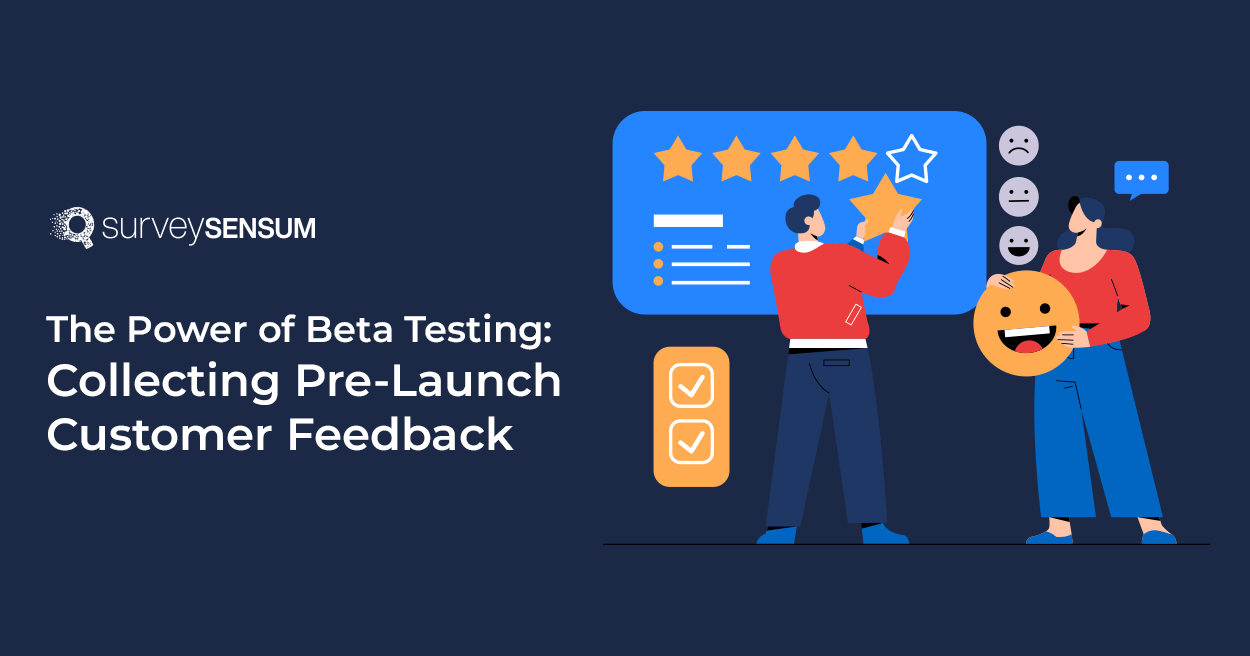
In today’s fast-paced world of product development, launching a new product or service can be a make-or-break moment for a business. To increase the chances of success, companies must harness the power of beta testing to collect pre-launch customer feedback. This invaluable process provides businesses with insights that can be the difference between a successful launch and a costly failure.
What is Beta Testing and Why is it Important?
Beta testing is releasing a pre-release version of a product or service to a select group of users, known as beta testers. These testers are real-world customers who provide feedback about their experiences with the product before it’s officially launched to the public. Beta testing is vital because it allows companies to identify and address issues, improve the user experience, and better understand their target audience’s needs and preferences.
Why is Pre-Launch Customer Feedback So Valuable?
The value of pre-launch customer feedback cannot be overstated. Here are some key reasons why it is essential:
1. Bug detection and resolution
Beta testers often uncover bugs, glitches, and errors that internal testing may have missed. Identifying and addressing these issues before the official launch can prevent negative customer experiences and brand reputation damage.
2. User experience optimization
Gathering feedback from real users helps companies refine the user interface and overall user experience. UI/UX optimization leads to a more user-friendly product that aligns better with customer expectations.
3. Understanding diverse user perspectives
Beta testers come from various backgrounds and demographics, providing valuable insights into how different user groups interact with the product. This diversity helps in tailoring the product to a broader audience.
4. Real-world scenario testing
Beta testers use the product in real-world scenarios, providing feedback on how it performs in different situations. This helps in fine-tuning the product’s functionality and reliability.
5. Generating Anticipation and Engagement
Involving customers in the beta testing process can generate excitement and anticipation for the upcoming launch. It also engages customers and fosters a sense of ownership in the product’s success.
6. How Software Testing AI Enhances Beta Testing
The integration of AI-powered tools in software testing has revolutionized the beta testing process. Software testing AI can automate repetitive testing tasks, such as regression testing, while simultaneously detecting bugs with greater precision. This advanced capability allows companies to focus on strategic improvements and deliver high-quality products efficiently.
How to Gather Pre-Launch Customer Feedback and When?
To gather pre-launch customer feedback effectively, companies can employ various methods, including-
1. Surveys:
Surveys are an excellent way to collect structured feedback from beta testers. Companies can use online survey tools to create questionnaires that gather specific information about the product’s performance and usability.
2. Feedback forms:
Integrating feedback forms directly into the product allows beta testers to report issues and provide suggestions seamlessly. These forms can be easily accessed within the product, making it convenient for users to submit feedback.
Gather Pre-Launch Customer Feedback with SurveySensum – Request a Demo
3. Interviews:
Conducting one-on-one interviews with beta testers can provide in-depth insights into their experiences and preferences. This qualitative feedback can be particularly valuable in understanding user motivations and pain points.
4. Focus groups:
Organizing focus group sessions with beta testers can facilitate discussions and idea-sharing. These sessions allow testers to interact with each other, uncovering valuable insights through group dynamics.
The timing of gathering pre-launch customer feedback is crucial. Beta testing typically occurs in the later stages of product development, when the product is feature-complete but before its official launch. This allows for meaningful feedback without major structural changes.
Tools and Techniques for Analyzing Pre-Launch customer feedback:
1. Custom software development services
Leveraging custom software development services can help in building dedicated feedback collection and analysis tools tailored to the product’s needs. Companies can also ensure that their feedback systems are scalable and adaptable by implementing custom software development services, enabling comprehensive data collection and effective analysis as the product evolves. These services provide a comprehensive approach to feedback management. However, before using any type of software make sure to go through a software evaluation checklist to ensure it aligns with your specific needs.
2. Advanced data analysis tools
Utilizing data analytics tools can help in processing and extracting actionable insights from the large volume of feedback received during beta testing. Natural language processing (NLP) algorithms can be applied to analyze written feedback for sentiment and recurring themes.
Conclusion
In the fiercely competitive landscape of product development, pre-launch customer feedback obtained through beta testing is an invaluable asset. It enables businesses to identify and rectify issues, optimize user experiences, and align their products with diverse user perspectives. By embracing the power of beta testing, companies can not only ensure a smoother product launch but also foster customer engagement and loyalty. The process of beta testing is not just about be releasing a product; it’s about creating a product that customers truly want and need, which is the key to long-term success in today’s market.
Author Bio:
Ishan Vyas is one of the founders of Citrusbug and a seasoned technical content writer with over 10 years of experience in the industry. With a passion for technology and a knack for translating complex concepts into accessible content, Ishan has been instrumental in helping readers understand and navigate the ever-evolving world of Software Development.















